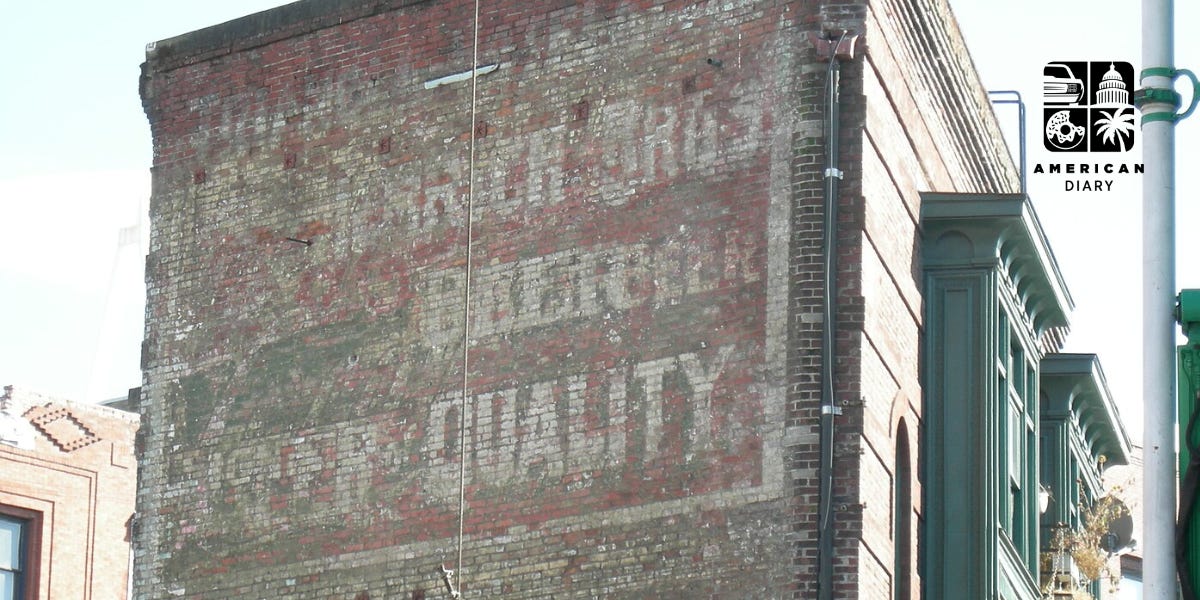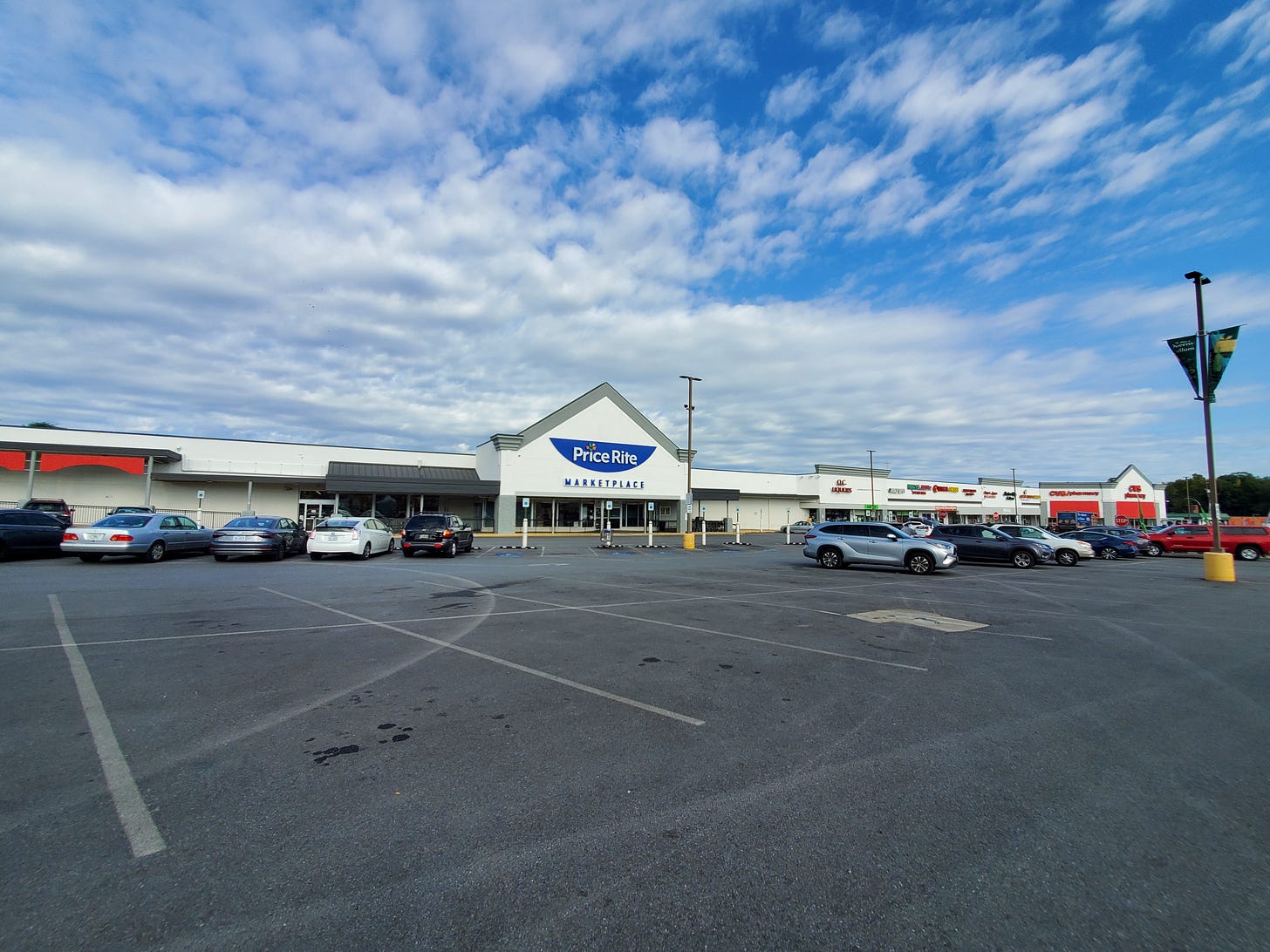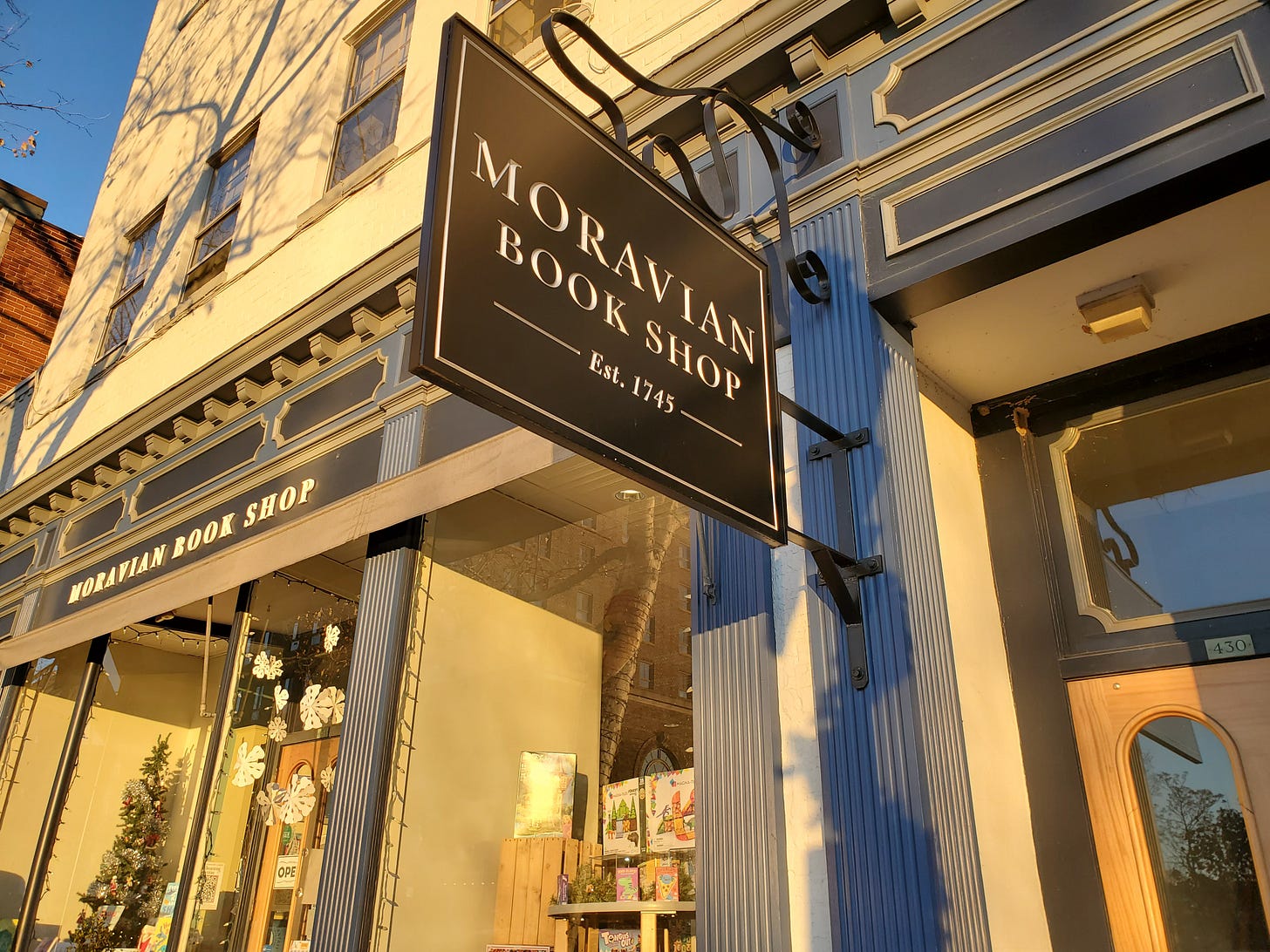Informal, Hyperlocal History
History often hides in plain sight–and it’s all around us

I love figuring out what old buildings used to be. “Informal, hyperlocal history” is a phrase I used in a piece on a curious old building (an old secret military contractor office that later became a print shop), to describe how I think about these stories: What always surprises me a little bit when I go down the rabbit hole digging for information is the sheer number of memories and anecdotes people have about every place under the sun.
These are more often than not Facebook comments on pages like “I grew up in ...” You can make fun of it or imitate it. You know, “Oh yeah, Bill almost ran me over in his Cadillac in that parking lot in 1962! [laughing crying emoji],” that sort of thing. People really do remember who worked at a store one summer 60 years ago, who staffed the kitchen of a restaurant, whether the pizza or the burgers or the pancakes were the best ever made. And in wading through and soliciting all these memories, I’m often able to piece together and tell the stories of ordinary things that nobody has ever collected and written down.
I find it interesting, personally, but I also think of it as a whole genre of history. “Informal, hyperlocal history” is maybe what’s meant by the term “oral history,” which refers to using people’s memories and testimonies to fill gaps in stories which were never formally recorded. But I think specifying “informal” and “hyperlocal” is a way of acknowledging that these stories are insignificant in a larger sense but also worth telling. They’re a way of putting ordinary places on the map, of separating tranches of similar artifacts into individual things.
History, the saying goes, is written by the victors. But that’s momentous, capital-H history. These stories I like to capture—Which was the first or last of a thing? How did a building begin life? What business, working in a vanished economic era, once operated here?—are written by those who remember.
And now, two pieces of American history hiding in plain sight.
The First and the Last
Pennsylvania is one of my favorite states. I’ve never lived there, but my family day-tripped there a lot from central Jersey (which absolutely exists) when I was growing up. Sometimes it was to bustling Philadelphia for a museum and Chinese food. Sometimes it was to pastoral Bucks County, to visit places like Peddler’s Village or New Hope. Pennsylvania, in my estimation, has some of the nation’s finest small cities: truly urban places that still have a cozy, small-town feel.
One of the best of these small cities is Bethlehem.
We visited Bethlehem over Christmas—it’s known, for obvious reasons, as the Christmas City—and we strolled around, compared the espresso at two local coffee shops (better than a lot of Starbucks locations, but not as good as my dad’s espresso machine), admired the historic architecture and warmed up in a few fun little shops (the olive oil and vinegar tasting room had a lot of products and flavors that I haven’t seen at similar stores).
But the coolest and probably most iconic small business in Bethlehem is the Moravian Book Shop. It doesn’t look like much: a classic but ordinary bookstore, which, because it also now shares a space with Moravian College’s official bookstore, is full of university gear and local tchotchkes. You might think, “It’s nice to see one of these old bookstores still in business here.”
But you wouldn’t know how old. The Moravian Book Shop is considered “the oldest continuously operating bookstore in the world.” (I take that to mean that it is also the United States’s oldest surviving bookstore.) It has continuously operated since 1745 and has occupied its current space since 1871.
The earliest businesses we would understand as modern bookstores arose not too long after the invention of the printing press. The Moravian Book Shop is very nearly right in the middle between the invention of the printing press and the present day.
It’s sometimes said that America lacks culture or history, at least compared with Europe or East Asia, where history is measured in centuries and millennia. There are noodle shops in Japan and skylines in Italy older than the United States itself. But here, hiding in plain sight in a small city that looks like dozens of other small cities, is a bona fide piece of history.
Stuck in the Middle With You
But so are the other more familiar artifacts of America’s commercial churn. I recently wrote about a building on U.S. Route 1 south of Richmond, Virginia. It doesn’t look like much—midcentury roadside structures are a dime a dozen along these old highway stretches—and today it’s home to a Mexican restaurant. It also has a curious old sign–very tall, and cladded in metal panels, probably covering up some defunct neon. In other words, as with the Moravian Book Shop, the average passerby would think little of it, except perhaps that the poor sign must have seen better days.
This little building, however—plate-glass windows and angled awning still undisturbed from its midcentury heyday—did not begin life as a Mexican restaurant, or even as a restaurant. It was a Planters Peanuts store, one of a couple hundred from the days when the nut giant also had a large retail segment. A few of those stores remain in operation, including a historic one in the Virginia peanut capital of Suffolk, but for the most part they’re long gone. (The great website Roadside Architecture has some photos and locations of Planters stores.)
Planters was founded in Pennsylvania but operated a large plant in Suffolk, where its founder lived for a while. The retail arm of the company petered out after a 1960 acquisition, but before that Planters was an independent regional company. The stores didn’t just sell tinned nuts, either. They made and sold roasted peanuts and confections in-store.
So imagine that in 1950 or 1960, you stop at that peanut store and buy some freshly roasted peanuts grown about 180 miles away in the same state. Like so many ordinary things that are passed by, this would not have seemed remarkable at the time. Yet today, it would be “craft” or “artisan” or some such.
And just as the Moravian Book Shop sits in the middle between the printing press and the present day, the old Planters store on a nondescript highway stretch sits in time between the explosion of the Virginia peanut industry and today.
This might just sound like a list of trivia, but let me spell out my larger point. Planters, a large, iconic American company (under a parent company) basically cut loose its old retail arm. A handful of these stores survive under some curious ownership structure, but most are long gone. Like so many brands—consider Howard Johnson’s and its forsaken restaurants, or McDonald’s periodic campaigns of restaurant demolition and rebuilding—company history and company artifacts are of little interest to the company itself. There’s no Planters museum with an exhibit of the old Mr. Peanut neon signs and a comprehensive history of the stores and people’s memories. There is absolutely no hint that this cinder-block box on an old highway was once a piece of America’s and Virginia’s history. When these things die, it is usually with a whimper.

One more little example that I can’t help but give you: In Prince George’s County in Maryland, not far from the Washington, D.C., line, there’s a nondescript, aging shopping center anchored by a supermarket. That supermarket happens to be the supermarket that Queen Elizabeth II visited in 1957; she was reportedly impressed with the state of American grocery retailing. Soft power and diplomacy, the triumph of American capitalism and royal history, all right there. And with no trace that it happened. It’s unlikely that most of the people who’ve worked in the store, or on the building, know this story.
These stories, and the work that goes into telling them, are instances of the whimsy and dynamism of American life, and are worth telling. And they’re a lot of fun, too.




